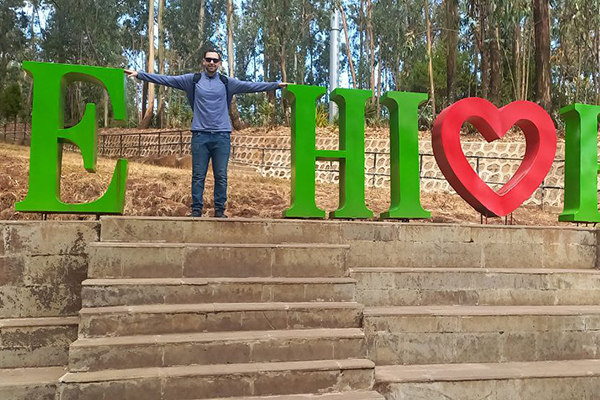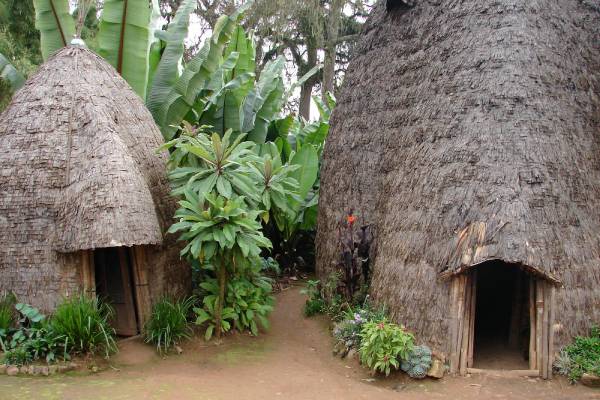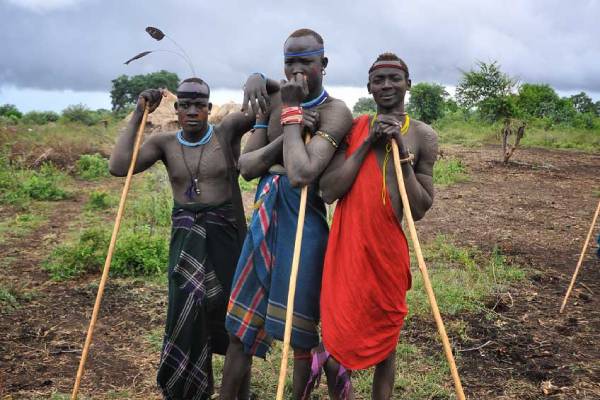Cultural Attractions


Addis Ababa
Home to the headquarters of the African Union, the third largest United Nations population, and with representation from nearly every foreign embassy from around the world, Addis Ababa is often referred to as the political capital of Africa. Addis Ababa is the world’s third-highest capital city at 2’665 meters above sea level and home to approximately 3.5 million people. Sitting atop the highlands next to the Great Rift Valley, the city sprawls over more than 200 square miles, housing a startling variety of historical and cultural attractions. And, if you want to get out, there are the massive Entoto Mountains to explore right above Addis Ababa. Within the city center, Addis Ababa boasts monumental architecture and all of the grandeur that can be expected from any national capital. Great churches, mosques, and museums offer respite, solace, education, and inspiration to travelers from around the world.


Omo Valley
A visit to the Omo Valley is ideal for those looking to explore and understand Ethiopia’s cultural diversity. Some of the country’s most ancient and colourful ethnic traditions can be observed here. There’s the elaborate body painting of many tribes, the clay plates in the ears and lips of the Mursi women, the ritual singing and dancing of the Arbore tribe, and the breathtaking bull-jumping spectacle of the Hamar people. The Omo Valley is situated within the immense Great Rift Valley, rich in fertile lands and wildlife. While accommodation in this area is on the rustic side, it’s perfectly situated to give you the rich opportunity to gain an insight into the lives of the local people. Tourism in this area has been criticised in the past for contributing to a kind of ‘human zoo’. Our guided visits here place a clear emphasis on authenticity and cultural sensitivity.


Dorze People
The Dorze are a small ethnic group residing in the Gamo Gofa Zone of Ethiopia’s Southern Nations, Nationalities, and Peoples’ Region. They speak the Dorze language, which belongs to the Omotic language family.
According to Ethnologue, the 1994 census recorded a Dorze population of 29,000, with 9,910 individuals being monolingual. While they are primarily concentrated in the southern regions of Ethiopia, some have migrated to Addis Ababa and other parts of the country. Many live in villages near Chencha and Arba Minch.
Weaving is a significant profession among the Dorze, renowned for their intricate craftsmanship. Their polyphonic, multi-part vocal music is distinguished by the sophisticated use of hocket. Men are primarily responsible for cultivating maize and beans, boys tend to livestock, and women manage household responsibilities.


Mursi Tribe
The Mursi number about 5,000 and are primarily pastoralists categorized in the Nilo-Saharan language family. Surrounded by mountains between the Omo River and its tributary the Mago, the home of the Mursi is one of the most isolated regions of the country.The Mursi are Known for their lip plate tradition; an unmarried woman’s lower lip will be pierced and then progressively stretched over the period of a year. A clay disc indented like a pulley wheel is squeezed into the hole in the lip. As it stretches, ever-larger discs are forced in until the lip, now a loop, is so long it can sometimes be pulled right over the owner’s head. The size of the lip plate determines the bride price, with a large one bringing in fifty head of cattle. The women make the lip plates from clay, color them with ochre and charcoal, and bake them in a fire.


Karo People
The Karo people are an ethnic group living near the banks of the Omo Valley in Ethiopia. They are renowned for their skill in face and body painting, a tradition practiced in preparation for dances and ceremonies. Both men and women adorn themselves to enhance their visual appeal and attractiveness while also projecting an intimidating presence to rivals.
Using locally sourced materials such as chalk, mineral rock, iron ore, and charcoal, the Karo create striking body decorations with intricate designs. Women, in particular, use white chalk and red ochre to craft elaborate circle, spiral, and cross-hatched patterns, enhancing their beauty and ensuring they stand out.
The Karo speak the Karo language, an Omotic tongue closely related to the Hamer and Banna languages. It is often considered a dialect of Hamer due to its linguistic similarities.
